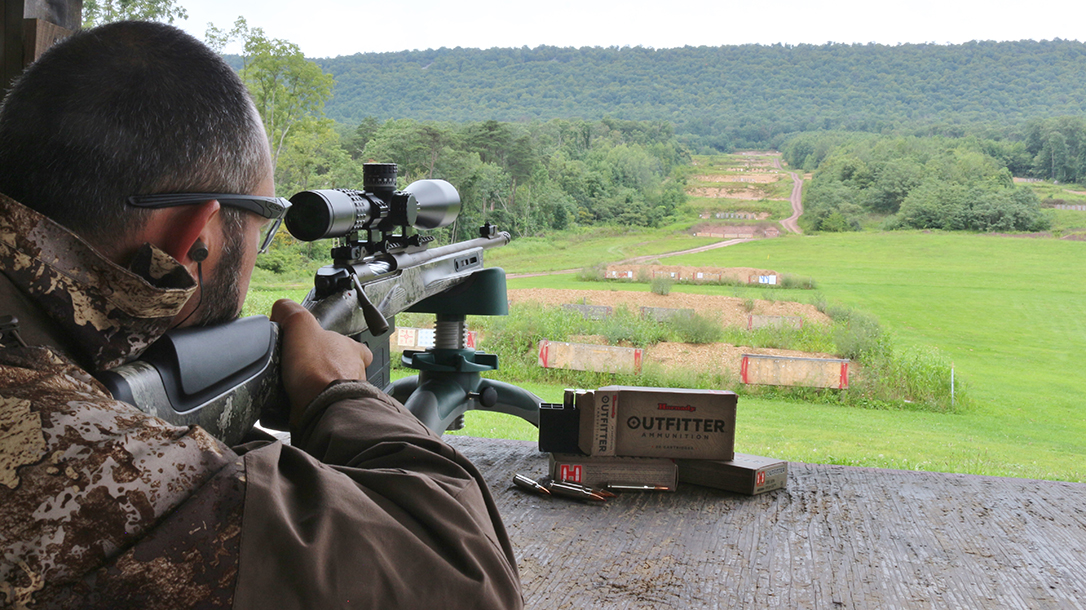My attitude toward scopes with ballistic drop compensation features has varied greatly throughout the years. If you asked me about them, say twenty years ago, I’d say they were nothing more than a marketing ploy for those too lazy to build a DOPE card. Maybe ten years ago, I’d say they were good within certain distances in hunting applications where the quarry was large enough to support a fair bit of error. Today, I wonder why we even bother with traditional optics anymore, as scopes like the Burris Veracity PH 4-20X have taken the concept of dial-and-forget and turned it into a reality. This hybrid optic features an on-board ballistic calculator mated to conventional features and takes all of the guesswork out of long-range hunting. After using one to impact targets out to 600 yards at the Athlon Outdoors Rendezvous, I needed to get one home for further testing, stat.
Burris Veracity PH 4-20X
If you have already dismissed this product because you don’t like the idea of “hunting through a camcorder,” relax. This isn’t a new spin on optics but merely a digital enhancement to the same configuration that your grandpa used on this .30-30. In short, it’s a main tube with a 50mm objective lens filled with an erector tube that provides a 4-20x magnification range. Eye relief is in the typical fashion, which means that you’ll mount your rifle the same as you would if it were wearing a purely analog scope.
On the right, you’ll find a typical capped windage turret built with solid, distinct clicks. However, you’ll notice something quite different when you get to the elevation turret. Well, depending on how far back you go, it might not be all that different after all. The elevation turret returns to the tension system of yesteryear, meaning that you won’t feel any clicking as you go through its range. Although clearly marked in a ¼ MOA scale, Burris went this route because they realized that their optical systems could be accurate to within 1/10th MOA; it just takes a digital interface to realize its benefits.
Advertisement — Continue Reading Below
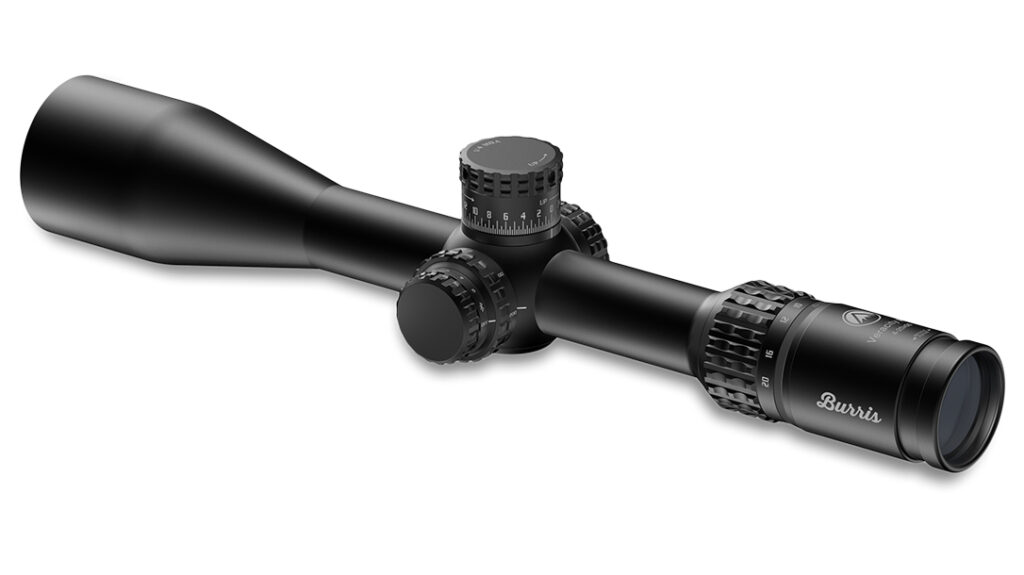
Digital Interface Features
The digital interface comprises two components. An erector tube position sensor reads where the current elevation is dialing. The second forms the internal heads-up display. The easiest way to think of it is to look at a pair of digital calipers. When you open or close the jaws, their distance apart is translated to a computer, converted to thousandths of an inch, and then spit out on the little display. If the batteries are dead (or missing), the jaws still open and close, but you have to use the backup markings, as the sensor and digital display need juice to work. When you replace the batteries, the sensor fires back up, recognizes whatever position the jaws are in, and displays the reading as if nothing ever happened.
The Veracity PH serves as a scope built with the same technology and a more advanced computer system. How advanced? Well, it can determine your holdover to within a yard of your target’s distance, regardless of incline. It even warns you when the rifle cants before pressing the trigger. Above all, it retains its zero and all basic functionality, even if the batteries die.
Advertisement — Continue Reading Below
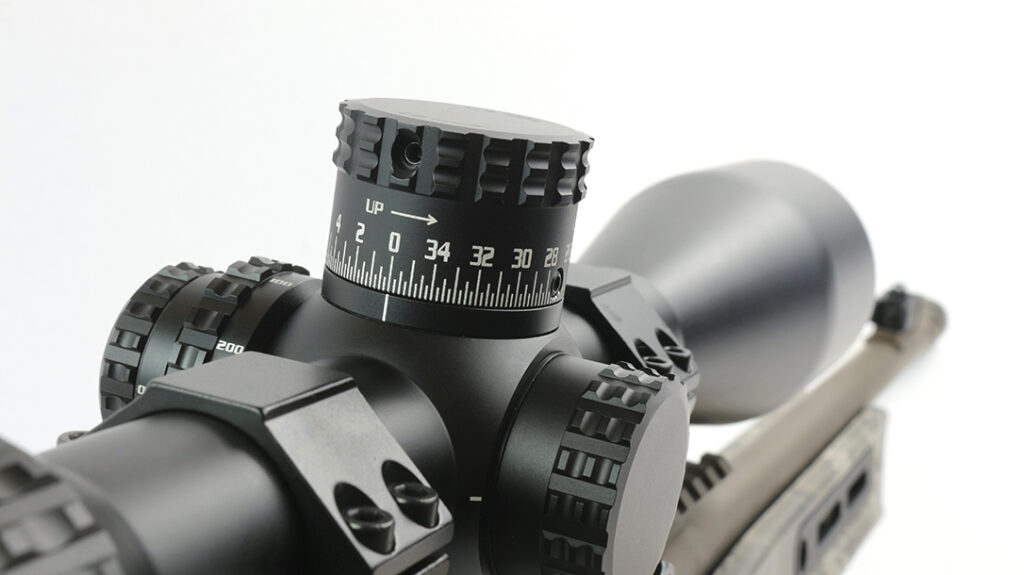
On the Gun
When my sample arrived, I mounted it to Franchi’s new All-Terrain Elite, which is the latest extension to its Momentum line. This compact rifle is chambered in .308 Winchester and makes a handy tool for the outdoorsman looking to keep a firearm at the ready in case something threatens the home front or that target animal happens to show itself after the hunt is perceivably over. Topping it with a scope enabling thoughtlessly cranking to a target distance only makes it that much better. From previous testing, I found that Hornady’s 165-grain CX Outfitter load worked well in this rifle, and with this optic, I should be able to hit out to 1,040 yards, which is my home range’s maximum.
As instructed, I downloaded the Burris Connect app, where I was sure that I had ample mobile data, and then headed to the range. This is the only step in the usage process where you need Wi-Fi or cell service, as any communication between the phone and the scope will happen over Bluetooth. It is fair to mention that you ought to have your ammunition’s ballistic information beforehand because if you’re hunting or shooting in a dead zone, you won’t be able to Google any information the app doesn’t have stored in its libraries.
Advertisement — Continue Reading Below
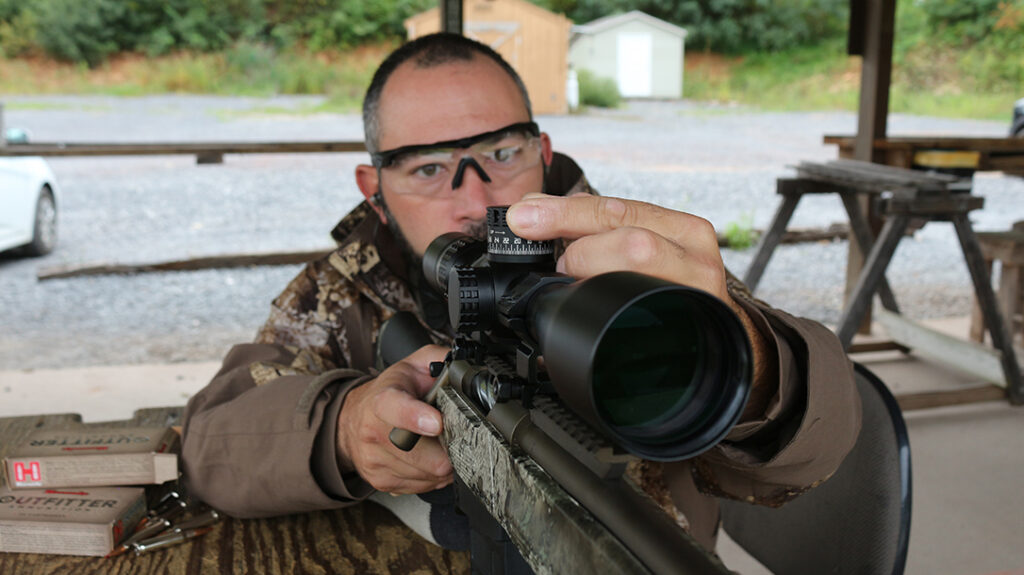
On the Range
Upon arrival, I steadied the rifle in a Caldwell Rock Rest and zeroed the optic over a G2 Chronograph to gather a true muzzle velocity. I did this before even installing the batteries to see how it performed. As advertised, the process was precisely the same as it would be with your run-of-the-mill scope, and I’m glad I chromed it because the shorter 18-inch barrel yielded less velocity than what was on the box. With my group centered, I loosened the three elevation cap screws and reset the turret, just as I have done with nearly any other optic.
Placing the rifle in a rack to cool, I had a little bit of programming to do. It began by imputing rifle data that includes what it is chambered in, how high the scope sits, and what distance it is zeroed for. After getting the shooting iron squared away, it was time to make an ammo profile for the cartridge du jour. Hornady’s CX bullet is pretty new, so it wasn’t in the menu yet. However, the 165 GMX is almost a dead ringer and was an available option. The difference in BC is only .007, and in hindsight, I could have adjusted it on this screen but neglected to do so. In this step, muzzle velocity is also entered, leaving you with just the environmental data to gather an accurate fire solution.
Advertisement — Continue Reading Below
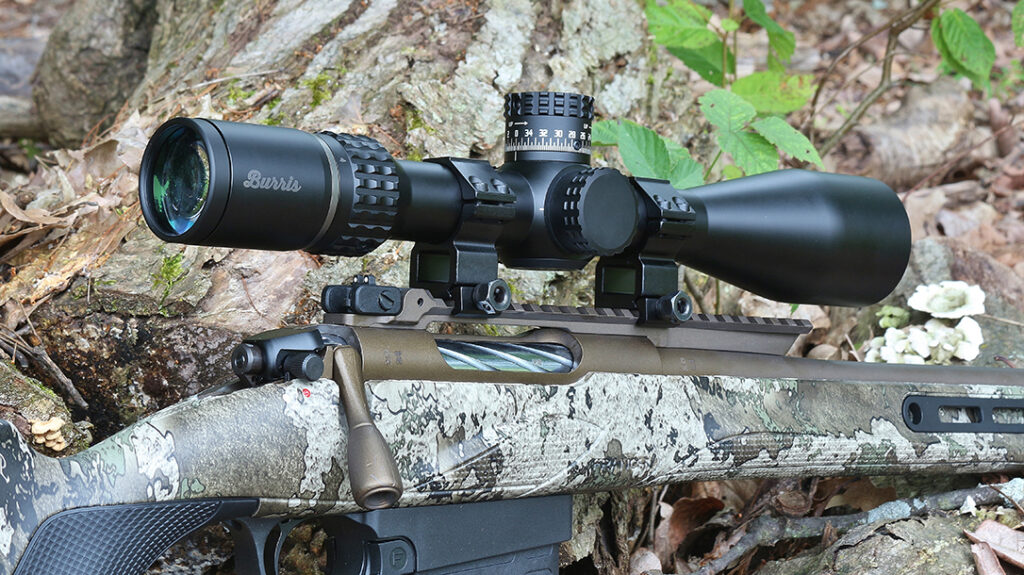
Data Transfer
After turning on the Bluetooth in both my phone and the scope, it was time to transfer this data over. Here, I could add environmental factors to the rifle profile, such as temperature, elevation, humidity, wind speed, and wind direction, before matching it to an ammunition type and shooting it over to the scope. After hitting upload, the phone’s display indicates that it is working, and when it is done, whatever you named the combo will display at the top of the screen inside of the scope.
If the elevation turret isn’t at zero, you can dial it down and reset it so that what’s happening on the scale is accurately represented on the screen. Think of it as closing your caliper jaws to zero it out. From here, you don’t need your phone anymore, so realistically, if you know where you’re hunting and what the weather will be, you can do all of this at camp the night before.
Advertisement — Continue Reading Below
With the scope now ballistically matched to the rifle and ammunition, the idea is to keep the crosshair on your target and dial until its distance matches what is on the screen. In the past, you’d be looking at the turret to dial the correct setting, forcing you to lose sight of the target. This brief instance is long enough for it to scurry away or wash out into a sea of vegetation.
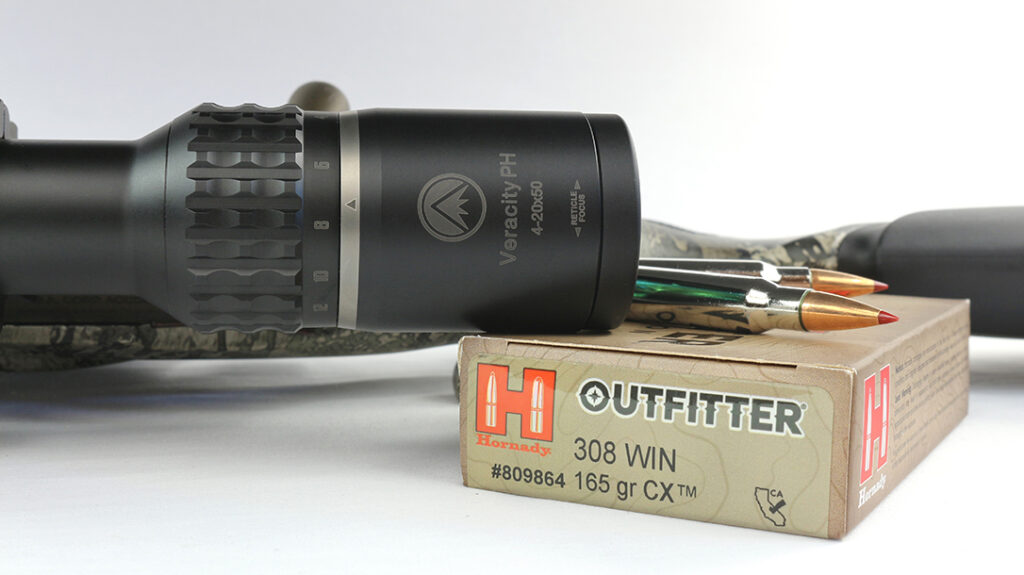
Target Transitions
As I put the scope on the individual targets between 200 and 1,000 yards, I practiced this and found something interesting: it self-adjusts for the target angle. This is a feature you can disable if your laser range finder has already factored it in. Before firing a shot, I wanted to check this data, so I plugged the same numbers into Hornady’s 4DOF Ballistic app. Using the traditional turret markings, I confirmed the HUD readout to within 1 MOA at most distances, telling me it was time to start sending some heat.
Advertisement — Continue Reading Below
Beginning with the 200-yard target, I scored an easy first-round hit. This held true at 300, 400, 500, 600, and 700 yards. Things started to get a little squirrely at 800 yards, which is typical for this facility, as the range ghost lives at this bank, and gunfire causes him to breathe heavily. Pushing out to 900 yards required a small amount of cheating, as I had to adjust the BC and velocity for the data to match what the bullet was actually doing. That’s not uncommon with BC-based calculators and something that I fully expected, particularly at this shooting range.


Advertisement — Continue Reading Below
Going Long With the Burris Veracity PH 4-20X
After smacking the 1,000-yard gong with the dialed data, I set my sights on the elk target that we keep at 1,040 and found a small issue: I was out of adjustment. My scope topped out at 1,012 yards, leaving me just a hair short for this shot. So, using the hash marks in the Wind MOA reticle and my knowledge of .308 Winchester, I determined a holdover and a wind call, cracked a shot, and was greeted by the satisfying green glow of the Caldwell Flash Bang hit indicator as well as the telltale ping just a few seconds later.
I wrapped things up by working back down the hill to ensure my adjustments didn’t affect my shorter-range engagements when, in fact, all it did was move my impacts closer to the center. Overall, I thought Burris did a fantastic job with the optic as well as the software. I love having the ballistic info on board, as well as the ability to tailor it on demand. Above all, I like that it isn’t married to this tech, and should the batteries die, you aren’t left holding the bag. I would not hesitate to take this into the most remote part of the world on the hunt of a lifetime, as it delivers a distinct advantage without abandoning old-world functionality.
For more information on the Burris Veracity PH 4-20X, visit burrisoptics.com.
Advertisement — Continue Reading Below
Caldwell Flash Bang
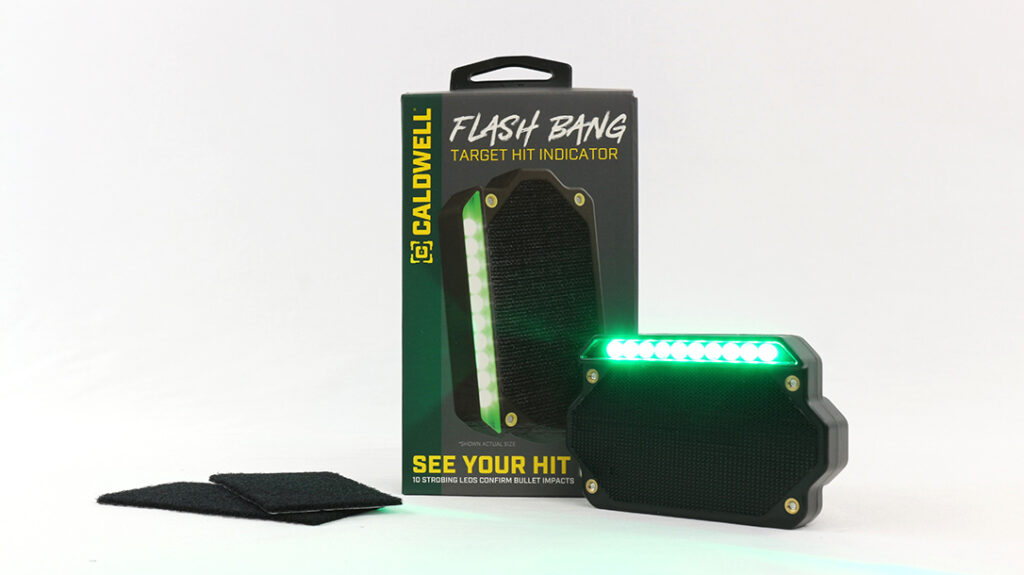
Spotting target impacts at extended distances is a difficult business, particularly by yourself. Caldwell’s Flash Bang hit indicators attach to the back of AR-500 steel targets and flash a brilliant green when they pick up the vibration caused by a bullet strike. Parallel wiring allows the unit to work even if some of the bulbs get struck, and when the day comes that you want to replace one, they run for less than $30. (Caldwellshooting.com)
Burris Veracity PH 4-20X Specs
- MAGNIFICATION RANGE: 4-20x
- OBJECTIVE LENS DIAMETER: 50mm
- TUBE DIAMETER: 30mm
- FOCAL PLANE: First
- FIELD OF VIEW @ 100 yards: 5.6-26 feet
- EYE RELIEF: 3.5-4.25 inches
- EXIT PUPIL: 2.5-12mm
- LENGTH: 15 inches
- WEIGHT: 27.2 ounces
- DIOPTER ADJUSTABLE RANGE: -3dpt – +2dpt
- RETICLE: Wind MOA FFP
- ELEVATION ADJUSTMENT: .25 MOA markings, .10 MOA Digital Resolution
- WINDAGE CLICK VALUE: .25 MOA
- MAX ELEVATION RANGE: 66 MOA
- MAX WINDAGE RANGE: 37 MOA
- PARALLAX: 50 yards to infinity
- TEMPERATURE RANGE: -20°F to +140°F
- BATTERY: CR2450x2
- MSRP: $1,199
